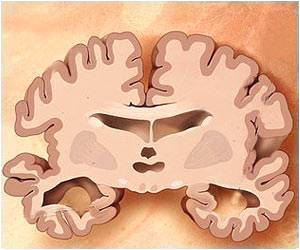The connections between neurons, the synapses, seemed significantly weaker in the chemically-fixed brain imaging method compared to the cryofixed one.

The next step is to embed the frozen tissue in resin. This requires removing the glass-water and replacing it first with acetone, which is still a liquid at the low temperatures of cryofixation, and then, over a period of days, with resin; allowing it to slowly and gently push out the glassified water from the brain. After the brain was cryofixed and embedded, it was observed and photographed in using 3D electron microscopy.
The researchers then compared the cryofixed brain images to those taken from a brain fixed with an "only chemical" method. The analysis showed that the chemically fixed brain was much smaller in volume, showing a significant loss of extracellular space - the space around neurons.
In addition, supporting brain cells called 'astrocytes', seemed to be less connected with neurons and even blood vessels in the brain. And finally, the connections between neurons, the synapses, seemed significantly weaker in the chemically-fixed brain compared to the cryofixed one. The researchers then compared their measurements of the brain to those calculated in functional studies, studies that measure the time it takes for a molecule to travel across that brain region.
To the researchers' surprise, the data matched, adding even more evidence that cryofixation preserves the real anatomy of the brain. Knott said that all this showed that high-pressure cryofixation is a very attractive method for brain imaging. The story in published in the journal eLife.
Source-ANI













